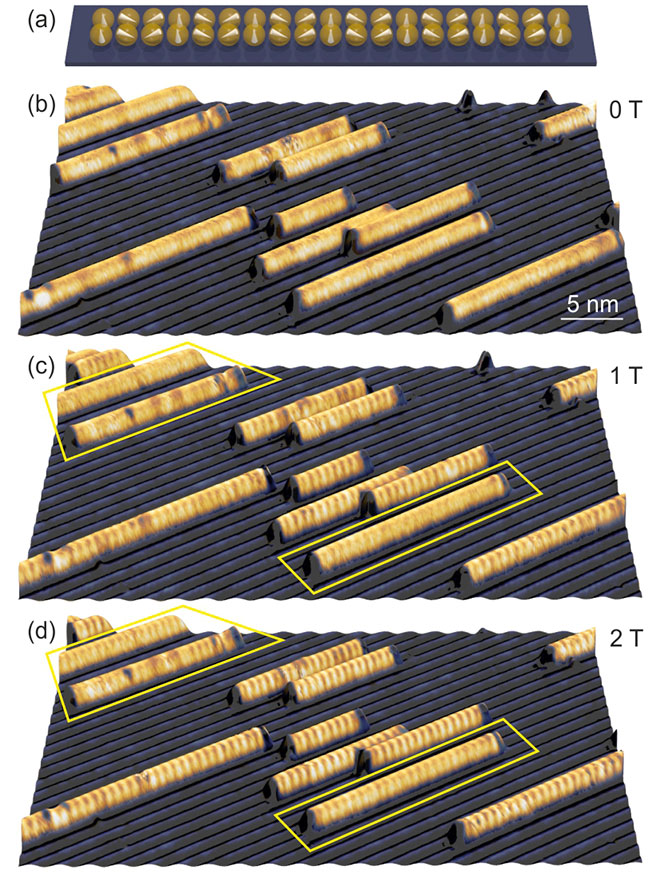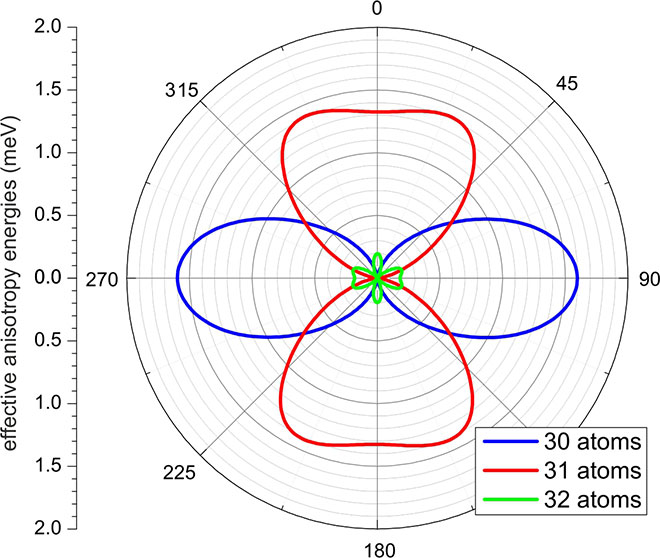Press Release
Parity Effects in 120° Spin Spirals
Physicists from Hamburg have shown that noncollinear magnetic states like a 120° spin spiral can display peculiar parity effects, beyond the typical even-odd effects observed in antiferromagnetic systems. The biatomic Fe chains are classified by the symmetry of their magnetic states, with the anisotropy changing periodically between out of plane, in plane and quenched. The exact number of atoms can, thus, have a strong influence on technologically relevant properties, such as thermal stability and magnetic field dependence, an aspect which could be exploited in the design of information storage or transfer applications.

FIG. 1: The system of Fe biatomic chains on reconstructed Ir(001). (a) A sketch of the sample: Fe atoms form biatomic chains in the trenches of the (5 × 1) reconstruction of Ir(001). The magnetic ground state is a spin spiral with a threeatom periodicity (the cones represent the direction of the magnetic moments). (b),(c),(d) Constant-current images colorized with the spin-resolved dI=dU signal of Fe chains on the Ir(001) surface at B = 0 T, B = +1 T, and B = +2 T, respectively (all: T = 12.8 K, U = +50 mV, I = 1 nA, Fe-coated W tip).

FIG. 2: Polar plot of the effective anisotropy energy for chains with lengths of 30, 31, and 32 atoms
(T = 0 K).
Publication:
Parity effects in 120° spin spirals
M. Menzel, A. Kubetzka, K. von Bergmann, and
R. Wiesendanger,
Phys. Rev. Lett. 112, 047204 (2014).
